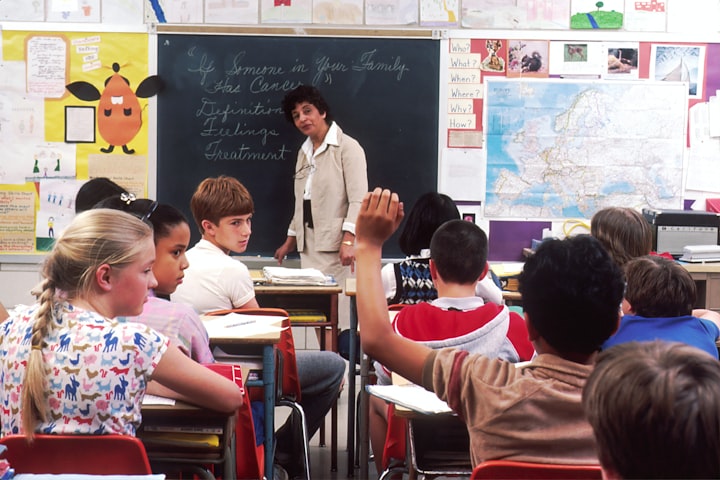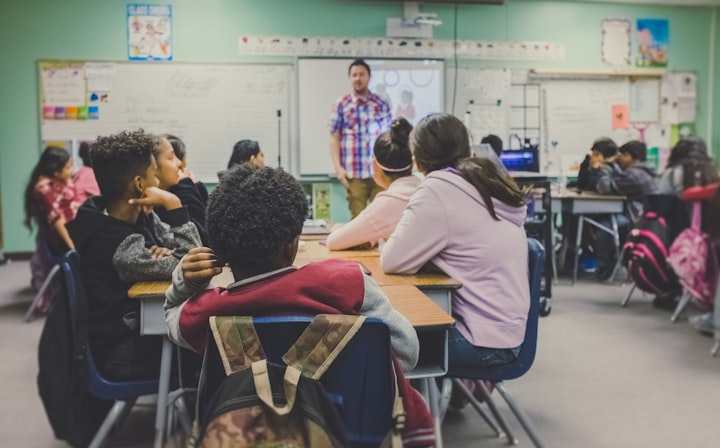The Changing Role of a Teacher: The Teacher as a Facilitator of the Learning Process
Teachers should do more than feed learners with information. They should facilitate the learning process so that learners can learn at their own pace.

Learning is the process through which a learner gains new knowledge and skills and then integrates the new knowledge with existing knowledge, which then transforms his/her thoughts and behaviors. Learning may happen formally or informally, in and out of the classroom.
What is a Facilitator?
The role of a facilitator in any teaching-learning process is to ease the learning process and help people learn. The facilitator arms the learner with strategies for fostering creativity, cultivating ideas, deepening comprehension, and improving communication.
How is the Teacher a Facilitator?
One of the primary roles of a teacher is to create a conducive environment for learning to take place in a formal setting. That makes the teacher a facilitator of the teaching-learning process in pedagogy. When we say that the teacher is a facilitator in the classroom, this means that the teacher isn’t an emperor who rules over the learners; the teacher doesn’t control the activities of the learners. Instead, he/she creates an environment that unlocks each learner’s spirit of creativity and innovation. In other words, each learner participates actively in the teaching-learning process, which makes learning more comprehensive.
As a teaching-learning process facilitator, the teacher:
i. Engages learners.
The teacher develops engagement techniques that ease a learner into complex subject matter or background knowledge in a subject. The teacher comes up with activities, resources, tips, and strategies to keep all learners engaged, interested, and invested in the learning process. The teacher doesn’t just impart information. He/she helps each learner to absorb that information. He/she breaks down barriers to learning and encourages success.
One way that a teacher engages learners is by using interactive learning activities in the classroom. These interactive learning activities include group work, problem-solving, and simulations. Another way is when teachers use interactive games to facilitate learning. Such games are fun, interesting, and engaging; they’re designed to help learners learn at a faster pace.
ii. Builds a positive classroom culture
Positive classroom culture is anchored on the concept of collaboration and teamwork. Learners are always willing to help one another excel. They’re always ready to bounce ideas off one another and pursue success as one cohesive unit. The teacher builds this culture by:
Organizing regular friendship-building exercises that help learners familiarize themselves with one another, hence making them less hesitant in working together.
Encouraging open communication where the teacher and his/her learners can share feedback freely and openly. By fostering a classroom that values communication, a teacher minimizes conflicts among learners and eliminates most of the common distractions.
Delegating duties and responsibilities, consequently passing on the principles of leadership and delegation. This improves efficiency in the classroom and encourages each learner to be responsible.
Imparting the values of responsibility of accountability in a learner. The teacher helps each learner improve their ability to manage tasks effectively. He/she trains learners to put their best foot forward and take accountability for their actions.
iii. Sets the pace for each learner
The teacher is responsible for setting expectations for every learner. He points learners in the right direction with regard to the materials to read at every step of the way. He/she administers tests and quizzes and then advises each learner on the areas to improve. The teacher also comes up with clear rewards and punishments for students in a bid to push them in the acceptable direction. This way, are able to see a clear path to academic success.
The teacher also uses pacing techniques to identify the pace at which a learner learns and then helps the learner to adopt the right pace. The teacher determines the right amount of information to present to each learner, how frequently it is reviewed, and how to adapt it to each student’s individual learning style. This helps learners achieve their goals while avoiding unnecessary frustration.
iv. Mediates and solves conflicts.
There are many learners in a classroom, and each learner is uniquely gifted. The role of a teacher is to mediate and encourage different learners to work together as a group, their individual differences notwithstanding. The teacher's mediation skills encourage healthy and mutually-beneficial discussions in the classroom, increasing the flow of new ideas and solutions from learners.
The teacher also solves conflicts that arise between learners, in and outside of the classroom. He/she focuses on improving student-student, teacher-student, and sometimes student-parent relationships. By so doing, the teacher helps foster valuable skills in a learner, such as teamwork and leadership.
v. Listens actively to learners’ challenges
Active listening means listening to a learner with the intention of understanding their problems and offering relevant/helpful solutions to those problems. The teacher uses his/her active listening skills to narrow down the specific challenges an individual learner faces. The problems could be from home (e.g. an abusive parent) or from school (e.g. bullying). The teacher listens and helps the learner to find a solution for an uninterrupted learning process.
vi. Supports each learner to achieve full potential.
As a facilitator, the teacher’s job is to support every student to pursue their full potential. The teacher facilitates each learner to do their best thinking and practice. The teacher, for example, organizes field trips that expand a learner’s perspective. He also supports the full participation of every student by cultivating mutual understanding and a sense of shared responsibility. In so doing, all students in the classroom learn to search for inclusive solutions to shared problems and build sustainable agreements. The teacher makes interventions that enable group decision-making and problem-solving.
vii. Encourages critical thinking
To facilitate learning in the classroom, the teacher encourages critical thinking by encouraging students to question even what is seen as obvious. The teacher encourages learners to criticize the things they learn in class and go beyond the curriculum to expand their knowledge base.
Conclusion
As teachers, we must adopt the role of facilitators as opposed to content providers. As the old adage goes, “You cannot teach a man anything. You can only help him, discover it within himself.” Our primary role should be to provide the conditions in which one can learn.






Comments
There are no comments for this story
Be the first to respond and start the conversation.